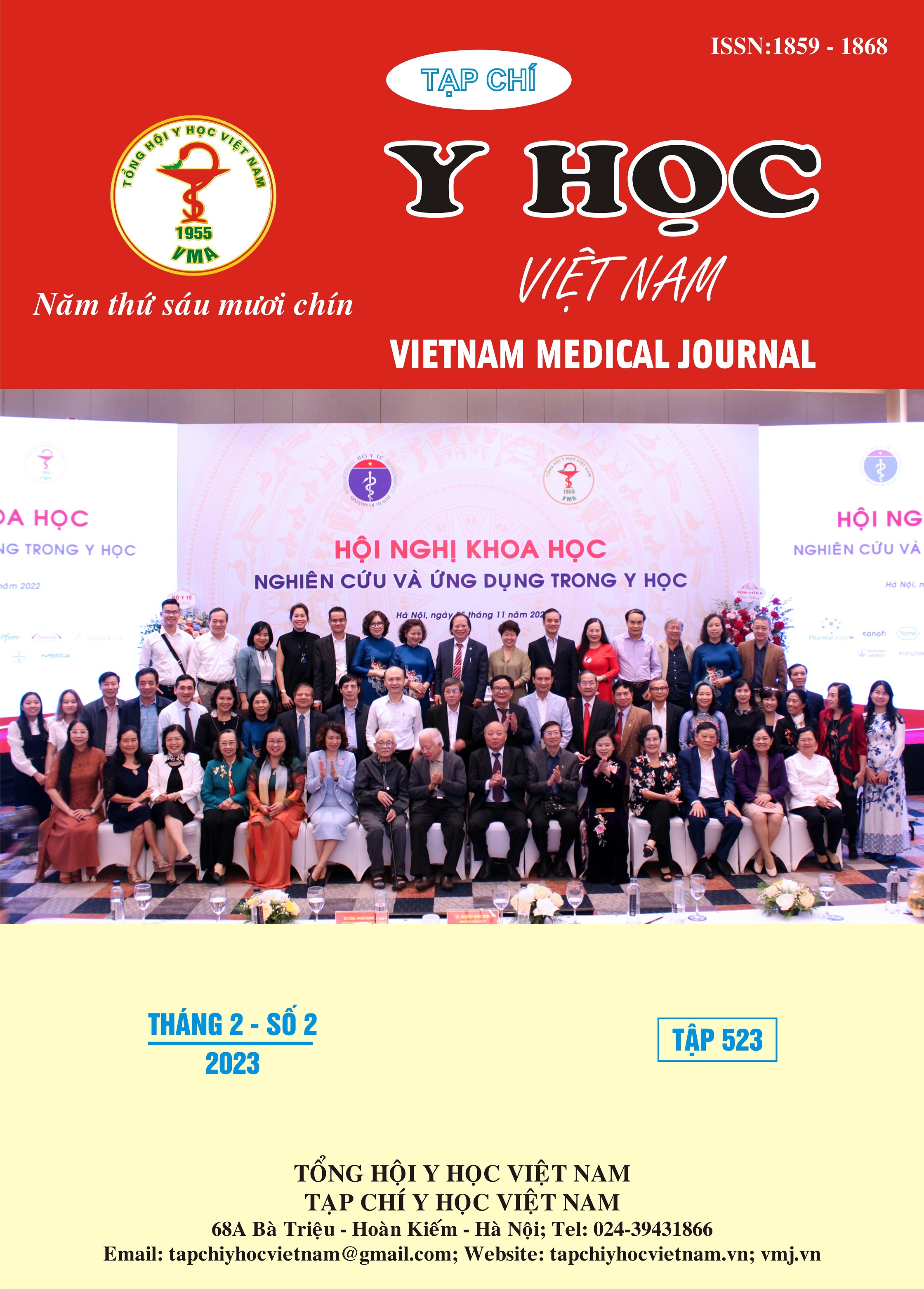HEMODYNAMIC CHARACTERISTICS IN SEPTIC SHOCK AND CARDIOGENIC SHOCK PATIENTS USING TRANSPULMONARY THERMODILUTION
Main Article Content
Abstract
Objectives: Studying hemodynamic characteristics in septic shock and cardiogenic shock using transpulmonary thermodiluation. Subjects and methods: ongitudinal prospective study 55 patients divied into 2 groups: septic group with 28 patients and cardiogenic group were treated in Phu Tho General Hospital from February 2019 to December 2021. Results: Male patients higher female ones with cardiogenic group 66,7% and septic shock 57,1%, mean ages in cardiogenic group 65,6±14 and septic group 64,9±12,1. During the first hours of admission, in patients with cardiogenic shock cardiac index in survivors 2,2±0,9 l/ph/m2 were signigicantly higher in nonsurvivors 1,7±0,4 l/ph/m2; in patients with septic shock, pulmonary vascular permeability index in survivors 4,5±0,8 were signigicantly higher in nonsurvivors 3,1±0,6. After 24 hours addmitted ICU, in patients with cardiogenic shock cardiac index in survivors 2,7±0,6 l/ph/m2 were signigicantly higher in nonsurvivors 1,8±0,3 l/ph/m2, systemic vascular resistance index, extravascular lung water index and pulmonary vascular permeability index were lower in nonsurvivors; in patients with septic shock, systemic vascular resistance index, extravascular lung water index and pulmonary vascular permeability index were significantly lower in nonsurvivors. Mortarity in cardiogenic shock 44,4% and septic shock 42,5%. ICU stay in cardiogenic shock 8,6±4,2 and septic shock 8,3±3,9 days. Cardiac index and systemic vascular resistance index were an independent prognostic factor for inpatient of cardiogenic shock and septic shock, respectively. Conclusion: Circulatory shock has a high mortality with 44,4% in cardiogenic group and 42,5% in septic group. After 24 hours addmitted ICU, cardiac index and systemic vascular resistance index are the most important predictor of inpatient mortality.
Article Details
Keywords
Septic shock, cardiogenic, transpulmonary thermodilution
References
2. S. M. Tibby, M. Hatherill, and I. A. Murdoch, (2000) “Use of transesophageal Doppler ultrasonography in ventilated pediatric patients: derivation of cardiac output,” Critical Care Medicine, vol. 28, no. 6, pp. 2045–2050.
3. Singer, Mervyn; Deutschman, Clifford S.; Seymour, Christopher Warren; et al (2016). “The Third International Consensus Definitions for Sepsis and Septic Shock (Sepsis-3)”. JAMA, 315(8), 801.
4. Thiele H, Ohman EM, de Waha-Thiele. et al (2019), “Management of cardiogenic shock complicating myocardial infarction: an update 2019”. Eur Heart J;40(32):2671-2683.
5. Lee, En-Pei; Hsia, Shao-Hsuan; Lin, Jainn-Jim et al (2017). “Hemodynamic Analysis of Pediatric Septic Shock and Cardiogenic Shock Using Transpulmonary Thermodilution”. BioMed Research International.
6. Nguyễn Hữu Quân (2016). “Nghiên cứu hiệu quả huyết động với sự hỗ trợ của phương pháp PiCCO trong xử trí sốc nhiễm khuẩn”. Luận án tiến sĩ y học; đại học Y Hà Nội.
7. Jawad I, Lukšić I, Rafnsson SB. (2012) “Assessing available information on the burden of sepsis: global estimates of incidence, prevalence and mortality”. J Glob Health. 2012 Jun;2(1):010404.
8. Awad HH, Anderson FA Jr, Gore JM, et al (2012). “Cardiogenic shock complicating acute coronary syndromes: insights from the Global Registry of Acute Coronary Events”. Am Heart J. 2012 Jun;163(6):963-71.


